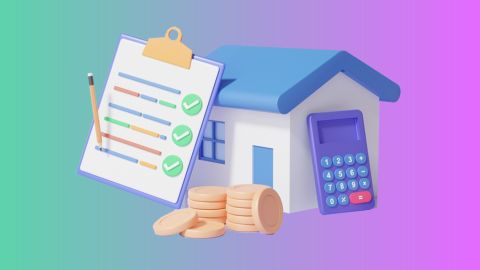Navigating the complexities of property transactions in India can be challenging, especially when it comes to understanding the document number in a sale deed. This unique identifier plays a pivotal role in validating the authenticity of your property documents, making it essential to comprehend its significance thoroughly. Whether you are purchasing a new property or managing existing real estate assets, ensuring the accuracy of the document number in your sale deed is paramount.
As we delve into the intricacies of document number in sale deed, we will explore common mistakes, rectification steps, and the importance of accuracy in legal transactions. Moreover, securing a Loan Against Property (LAP) can be a strategic financial move when dealing with property-related concerns. Bajaj Finance offers tailored solutions for those seeking to leverage their property for financial needs. For detailed information on features, eligibility, and the application process, you can visit Bajaj Finserv Loan Against Property.
Understanding document numbers in sale deeds
The document number in a sale deed serves as a critical reference point in the realm of property transactions. It is a unique identifier assigned by the registrar's office during the registration of a property document. This number ensures that each sale deed is distinct and can be accurately tracked and retrieved from public records. Essentially, it acts as the DNA of your property documentation, providing a verifiable link to the official registry.
An accurate document number is indispensable for several reasons. Firstly, it establishes the legality of the transaction, confirming that the property has been duly registered. Secondly, it aids in the seamless transfer of property ownership by providing a reliable reference during future transactions. Lastly, a correct document number is crucial when applying for financial products such as a Loan Against Property, as lenders require precise documentation for processing applications.
Common mistakes in sale deed document numbers
Mistakes in sale deed document numbers are not uncommon, yet they can lead to significant complications if left unaddressed. Common errors include:
- Typographical errors: Simple typos during data entry can render the document number invalid.
- Transposition errors: Numbers accidentally swapped in sequence can create discrepancies.
- Incomplete numbers: Missing digits or incorrect formatting can lead to untraceable documents.
- Duplicate entries: Multiple documents mistakenly assigned the same number can cause confusion and legal disputes.
Recognising these errors early and taking corrective action is crucial to maintaining the integrity of your property records.
Steps to correct a wrong document number in sale deed
Correcting an erroneous document number in a sale deed involves several steps:
- Identify the error: Cross-check the document number against the registrar's records.
- Notify the registrar: Inform the registrar's office about the discrepancy.
- Submit a rectification request: Provide necessary documentation and a formal request for rectification.
- Pay applicable fees: Cover any fees associated with the correction process.
- Receive confirmation: Obtain a corrected document or an official confirmation of the correction.
Importance of accurate document numbers in legal transactions
Accurate document numbers are vital for the legality and authenticity of property transactions. They ensure that every sale deed can be seamlessly verified against the official registry, preventing fraudulent activities and ownership disputes. Additionally, an accurate document number is essential for financial transactions, including securing a Loan Against Property from institutions like Bajaj Finance.
Without a valid document number, you may face obstacles in transferring ownership, resolving legal issues, or leveraging your property for financial purposes. Therefore, meticulous attention to detail during the initial registration and subsequent verifications is crucial.
How to verify sale deed document numbers?
Verifying the document number in your sale deed is a straightforward yet crucial process:
- Access the registrar’s office records: Visit the local registrar’s office or their official website.
- Use the online portal: Many states offer online portals for property record verification.
- Cross-check details: Ensure that the document number matches the details on your sale deed.
- Seek professional help: Consult with legal professionals or property experts for thorough verification.
Taking these steps can save you from potential legal troubles and financial losses.
Legal procedures for correcting sale deed errors
Correcting errors in a sale deed, including document numbers, involves adhering to specific legal procedures. Initially, you must file an application for rectification with the registrar’s office, detailing the nature of the error and providing supporting documents. The registrar will then verify the information and approve the correction if deemed legitimate. In some cases, you may need to approach the court to obtain a rectification order, especially for significant discrepancies.
Documents required for rectification of sale deed
| Document type | Purpose |
| Original sale deed | To verify the existing document number |
| Proof of error | Evidence showing the mistake in the document |
| Application form | Formal request for rectification |
| ID proof | Identification of the property owner |
| Fee receipt | Proof of payment for rectification fees |
Understanding the document number in a sale deed is fundamental for the smooth execution of property transactions. Ensuring its accuracy can prevent legal hassles and facilitate financial processes, such as securing a Loan Against Property. By taking proactive steps to verify and correct document numbers, you safeguard your investments and uphold the legality of your property dealings.
For those looking to leverage their property for financial needs, Bajaj Finance offers comprehensive solutions tailored to your requirements. Learn more about the application process and benefits by checking Bajaj Finserv Loan Against Property. Accurate documentation and informed financial decisions can significantly enhance your property management experience.




